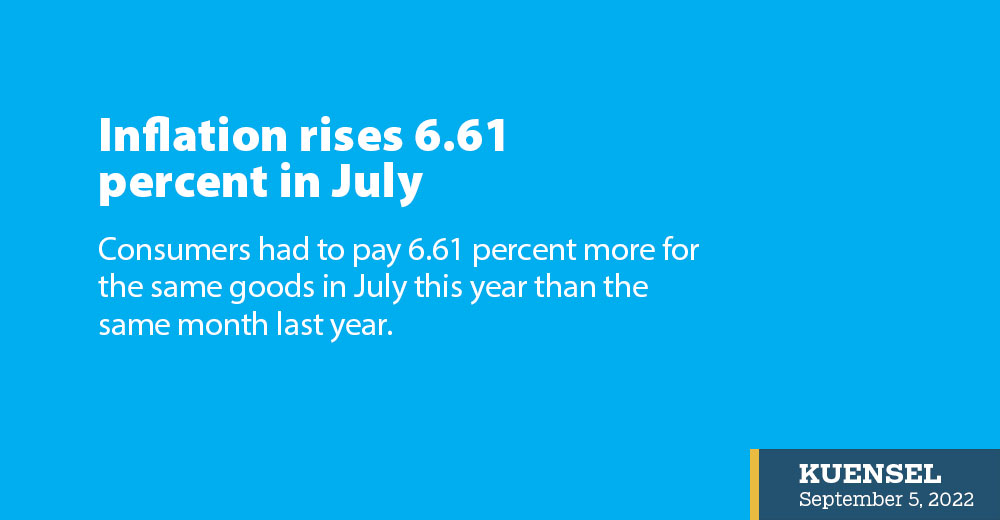Thukten Zangpo
Consumers had to pay 6.61 percent more for the same goods in July this year than the same month last year.
This is according to the National Statistics Bureau’s (NSB) latest consumer price index (CPI), released on August 31.
For example, if a packet of milk was Nu 100 and the price increased by Nu 6.61 compared with a year earlier, then the milk’s inflation rate is 6.61 percent.
The CPI is the pace at which prices of goods and services are rising over a period of a given time.
The inflation rate as of July is still higher than the Royal Monetary Authority’s upper inflation threshold of 6 percent.

Food prices have become expensive by 5.82 percent in July this year and non-food prices by 7.29 percent over the past year.
Non-food prices continue to have a higher contribution to the overall increase with 58 percent of the increase while food prices contributed 42 percent, according to the NSB.
Given the increase in fuel prices in recent months, transport continues to record the highest increase with 12.79 percent.
The transport sector is the second highest contributor with 29 percent to the overall increase in prices.
The prices of food and alcoholic beverages became expensive by 6.24 percent.
Clothing and footwear became expensive by 8.21 percent. Health costs increased by 4.73 percent.
Similarly, the prices of housing and utilities rose by 5.29 percent and furnishings, household equipment and routine household maintenance by 5.48 percent.
Education expenses increased by 3.15 percent and restaurants and hotels bill saw up by 3.66 percent.
Communication was the only sector that saw a drop in prices by 0.04 percent.
Comparing July’s inflation to the previous month, it saw an increase in prices of goods by 1.16 percent after it dropped in June.
Food and non-food saw an increase of 1.12 percent and 1.2 percent respectively.
Food and alcoholic beverages contributed to almost half of the overall increase followed by clothing and footwear, which rose 2.98 percent contributing to 23 percent of the overall increase.
Education recorded the highest monthly increase with 3.15 percent due to an increase in college fees.
With the increase in the price of goods in the economy, the purchasing power of Ngultrum as measured by CPI saw a drop of 6.2 percent.
This means that Nu 100 in July this year is only worth Nu 60 as of December 2021 prices.


